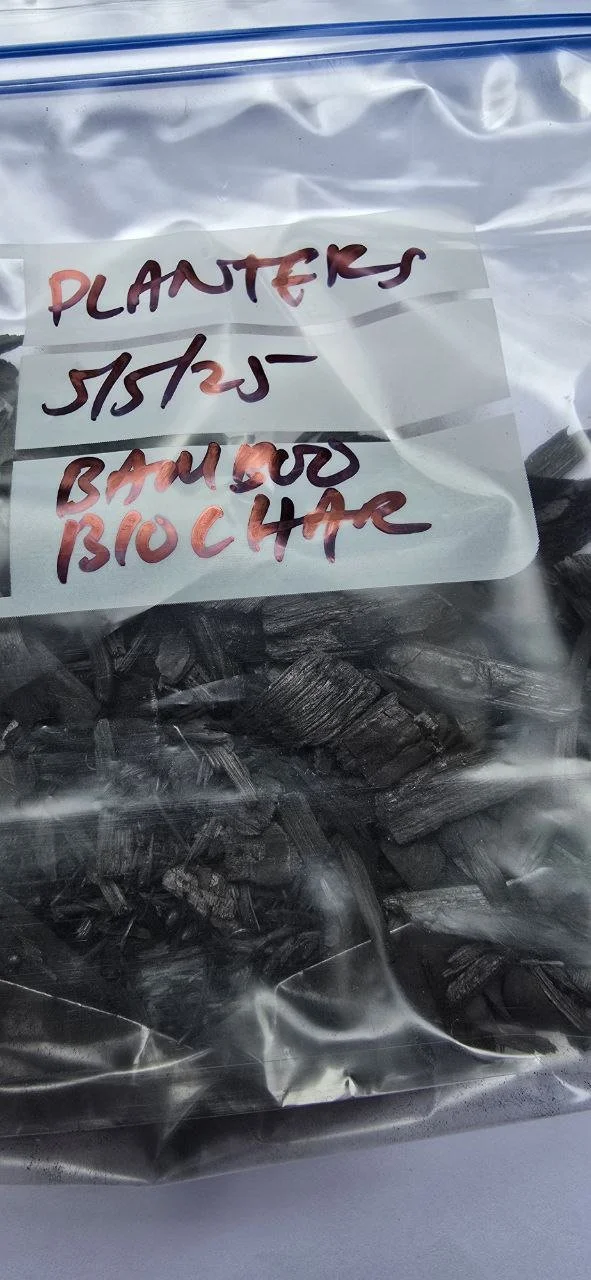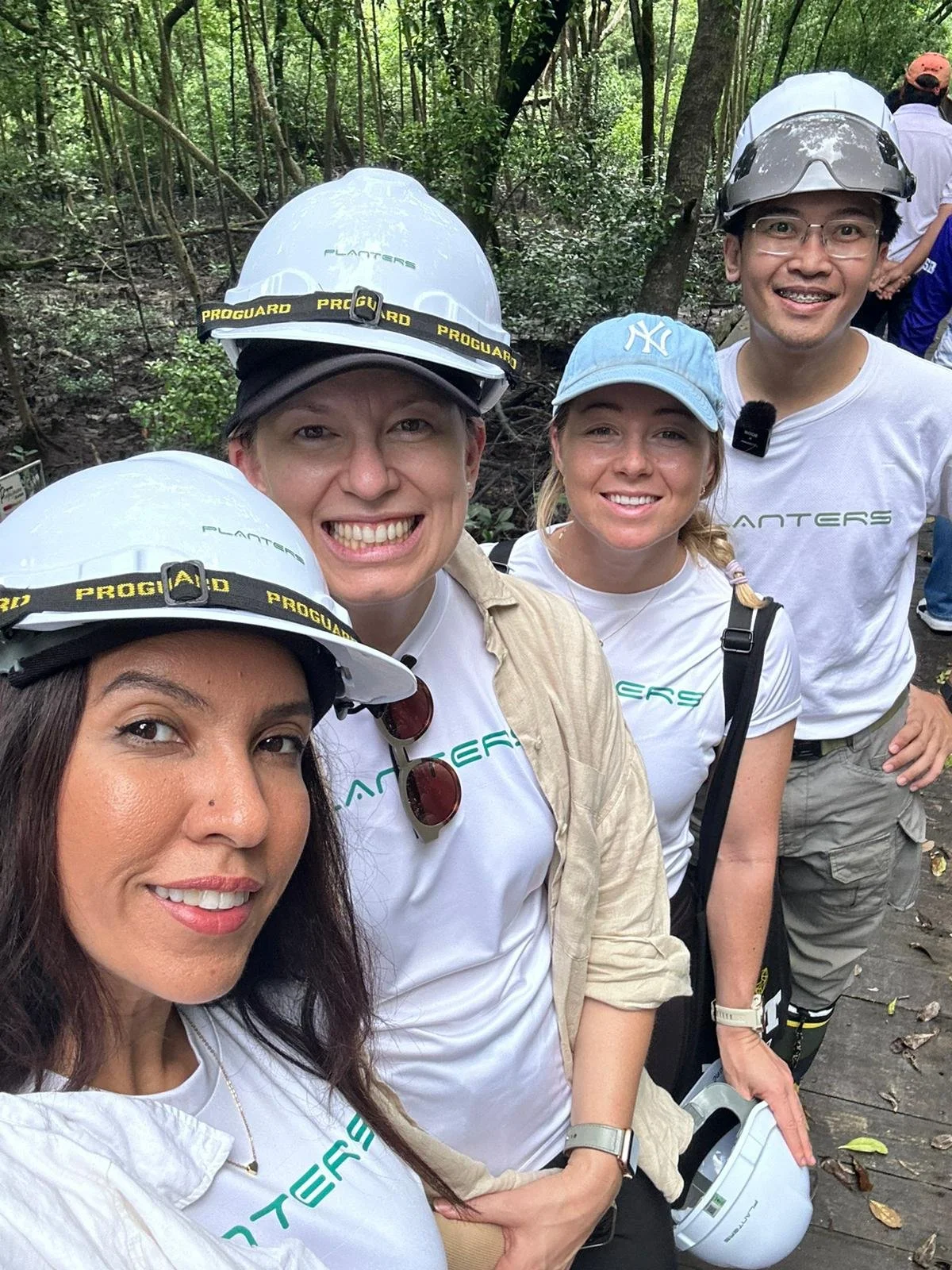Planters International Berhad Debuts “Coastal Oasis Sungai Klang” at CFIL During MyFintech Week 2025
Kuala Lumpur, 6 August 2025 – Planters International Berhad took centre stage at the Climate Finance Innovation Lab (CFIL) last Wednesday at Sasana Kijang, unveiling its flagship Coastal Oasis Sungai Klang project during MyFintech Week 2025.
Positioned under Theme 2: Waste & Circular Economy, the initiative sets a new benchmark for large-scale, finance-ready restoration that addresses urban pollution, ecosystem degradation, and climate resilience in one integrated programme.
From Source to Coast — Full Corridor Restoration
Coastal Oasis Sungai Klang covers the entire 56 km river stretch and 27,960 hectares of surrounding ecosystems, from its upstream tributaries in Kuala Lumpur to its coastal outlet into the Straits of Malacca.
Designed as a holistic system, the project intercepts waste and pollutants at multiple points, restores degraded habitats, creates sustainable green jobs, and delivers measurable climate benefits.
Core Programmes & Activities
1. River Waste Interception & Ocean-Bound Plastic Reduction
Strategically placed debris interception systems and floating barriers trap plastics, litter, and organic debris before they reach open waters.
Special focus on urban-origin plastic waste, which accounts for a significant share of Malaysia’s ocean-bound plastics.
All collected plastics are channelled into recycling and value-added processing streams to keep materials in circulation.
2. Pollutant Reduction & Water Quality Enhancement
Organic waste from surrounding urban runoff is separated from solid litter.
This organic fraction undergoes controlled processing into biochar, which is deployed in constructed wetlands and filtration systems to absorb contaminants.
Biochar applications target reduction of nutrient overloads, heavy metals, and turbidity — improving aquatic health and reducing treatment costs downstream.
3. Biochar Production for Circular Economy & Climate Mitigation
Organic waste → biochar via pyrolysis, locking carbon into a stable form.
Applied to degraded soils along the river corridor and in community agriculture projects.
Enhances soil fertility, increases water retention and provides measurable carbon sequestration — contributing to verified climate credits.
4. Habitat Rehabilitation & Nature-Based Solutions
Replanting mangrove, riparian vegetation and wetlands to stabilise banks, filter runoff and create wildlife corridors.
Emphasis on native species to restore ecological balance and climate resilience.
Target to rehabilitate over 1,000 hectares of degraded riparian zones in the first phase.
5. Sustainable Livelihoods & Green Jobs
Training and employment for local communities in:
Waste recovery and recycling
Biochar production and application
Mangrove and riparian restoration
Eco-tourism and river stewardship
Skills transfer programmes designed to transition seasonal workers into year-round environmental management roles.
6. Education, Awareness & Citizen Science
Collaboration with schools, universities, and NGOs to promote river stewardship.
Citizen-led biodiversity monitoring and water quality testing.
Public awareness campaigns to reduce upstream littering and encourage household waste segregation.
7. Climate Finance & Measurable Impact
Blended financing approach — combining public, private, philanthropic, and market-based mechanisms — to ensure long-term funding stability.
Measurable outcomes include:
Tonnes of plastic removed per year
Litres of water quality improved through biochar filtration
Hectares of habitat restored
Carbon tonnes sequestered through biochar and reforestation
Turning Waste Into Value
The project’s waste-to-value model ensures that what is removed from the river isn’t just discarded:
Plastics → recycled into new materials for the domestic and regional market.
Organic matter → converted into biochar for soil and water treatment.
Restored ecosystems → provide flood mitigation, fisheries recovery, and eco-tourism opportunities.
This model tackles pollution at its source, reduces greenhouse gas emissions, and creates ongoing revenue streams for local stakeholders.
Partnership with Landasan Lumayan Sdn Bhd under the Selangor Maritime Gateway (ZPE SMG)
Coastal Oasis Sungai Klang is implemented in partnership with Landasan Lumayan Sdn Bhd (LLSB), the master developer of the Economic Development Zone Selangor Maritime Gateway (ZPE SMG).
Under this collaboration, LLSB has appointed Planters International Berhad to lead the conservation component of the SMG initiative — focusing on ecological restoration, waste interception, and habitat rehabilitation along the entire Sungai Klang corridor.
This partnership ensures that Coastal Oasis Sungai Klang is fully aligned with ZPE SMG’s integrated development vision, combining environmental recovery with long-term economic value creation for the region.
A Replicable Blueprint for Malaysia’s Rivers
“Our vision is for Coastal Oasis to be a nationwide network of large-scale restoration sites,” said Jay Padasian for Planters International Berhad. “Sungai Klang is the proof-of-concept that urban waste recovery, habitat restoration, and biochar innovation can work together to create lasting environmental and economic value.”
Following the Sungai Klang debut, Planters International will expand the Coastal Oasis model to other strategic rivers and coastlines, each tailored to local ecosystem needs, yet anchored in a scalable, outcomes-driven framework.












